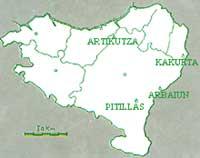The rainforest, a paradise about to lose?
1986/06/01 Barandiaran, Mariaje | Irazabalbeitia, Inaki - kimikaria eta zientzia-dibulgatzaileaElhuyar Fundazioa Iturria: Elhuyar aldizkaria
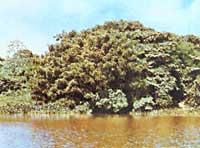
Colombe's discovery of the rainforest has led Westerners to conquer the rain forest. Although his vital prosperity has fascinated us, we have not realized that among all living "organisms" he is the weakest and most aggressive.
The largest and best-known rainforests is the one that occupies the Amazon River on the hillside. A fifth of the planet's fresh water is poured daily through this river. Its strength is enormous, since 100 miles from the Atlantic you can drink filling a boat on the surface. Due to its depth, boats sailing by the sea can travel up to 1500 Km. upstream without any problem. Along hundreds of kilometers, this river, wider than the English Channel, supplies 10,000 tributaries.
Three fifths of the world rainforest is concentrated in South America and Central America. The rest is scattered across West Africa, Southeast Asia and the Pacific Islands. The main reserves of these last territories are in Zaire and Indonesia. The rain forest covers a piece of bark that can be invaded with the size of the United States.
In geological times, until 15 million years ago, the rain forest was much more widespread. In times of the great saurians, almost all the land could be considered rainforest.
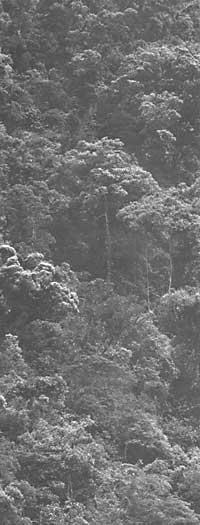
Throughout its long history, the rainforest has been able to develop enormous wealth and wealth. It has had enough time and space. These have kept the climate very stable month by month, year by year, century by century, aro and has given the necessary follow-up to evolve the species that inhabit it. In addition, the end of the recently disappeared glaciation has increased the health and prosperity of life.
The melting and runoff of the ice caused an apparent change in the jungles. Formerly, the jungle continued. In another case, the trees of the world accumulated in isolated spots. This has created suitable conditions for uncoupled evolution. During the contraction, in every forest spot, life evolved decoupled, giving rise to unique and own living beings. When the jungles reunited, these species expanded to compete with others. This competition in search of sun and food intensified the process of change. And when the forest was reduced again it was forced to evolve in isolation.
In times of ice, this work was done differently in different regions of the world. In Africa and America it seems that the advance of the ice limited the jungle to temperate and humid shelters. In the retreat of the ice, the awning used these shelters as a bridge to reopen them in abundance. In Barea Oriente, however, the ice had an opposite effect.
With increased ice, sea water levels decreased to 1800 meters. Thus, the seabed between islands and continents was exposed. Trees, plants and other rainforest species were dispersed on the "seabed," bringing isolated communities into contact. When he returned temperate, the sea covered his place, recreating the kingdoms.
In both places, however, the process was similar: reducing and expanding.
As a result of this continuous process, the rainforest is more voracious than the jota. Half of the living species in the world live in the rainforest.
In Madagascar there are five times more trees than in North America. In Ecuador there are more plant species than in all of Europe. And on a volcano in the Philippines, specifically on Mount Makiling, there are more hot plants than in the United States.
In a 10 km 2 stretch of the jungle there are 1500 species of flowers, 750 species of trees, 400 species of birds, 150 types of butterflies, 100 kinds of reptiles and 60 species of amphibians. The number of insects is huge and no one has been able to count. According to the American Academy of Sciences, 42000 different insects could be per 10,000 m 2.
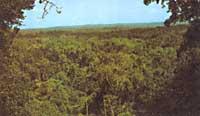
However, this biological construction of enormous prosperity rises on unstable bases. In general, the soils of rainforests are usually very poor, despite the abundance of areas.
So how is it possible for nature to build this castle with sand? The answer is by complexity and interdependence. Nothing is lost and everything is recycled.
In society a very erroneous concept of jungle has spread, something closed dark, something that does not offer access and that is full of obstacles. In addition, behind all the trees and bushes there is a forest prepared to jump on a ruthless spiker. It is an image transmitted by films and some writers who have never walked through the jungle.
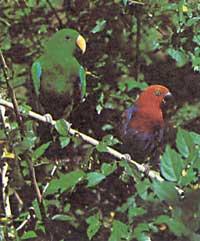
The first explorers are also to blame for creating this image. They saw only the banks of the jungle, which circulated through the rivers. And it must be recognized that on the banks there is a closed and compact jungle.
In the heart of the jungle it is easy to walk. You should not use the uprising to cut the lianas and plants that close the way, but to mark your way into that green equality. After all you are in the arches created by large trees.
Calmness breaks only with the distant laughter of monkeys and bird songs.
If you fly over trees instead of on the ground, you will see a different world. Between 300 and 400 meters from the ground is the top of the jungle. This does look like a jungle. The branches of the trees form a kind of irregular and compact canopy. Sometimes a giant tree rises 100 meters above the canopy.
It is full of colors, flowers anywhere. The animals are abundant: monkeys, marsupials, large cats like leopard, brightly colored frogs, green lizards, poisonous snakes, colorful and noisy birds...
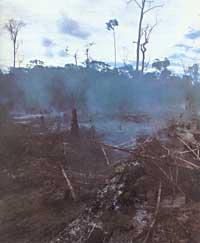
Everything is rich, because sunlight brings food and energy. When you turn to the bottom of this green construction, the light slows down and begins impoverishing the exual life. On the substreet of the canopy, the dark world is dominated by giant tree trunks. However, we descend about 150 meters below, we will find branches of small trees. In this area inhabit species that require less luminosity. Places where giant trees have fallen become more compact and prosperous. This section has its own plant and animal community.
Below, on the pavement, everything is wet and aromatic. Here only 2% of the light comes. The air is forgotten and rots everywhere. This rot is the key that the rain forest remains sterile. Like a sheet, the floor is covered by a thin layer of waste. It is often not even 10 centimeters high, but these are the foundations of the building.
The trick of everything is a quick recycling. When a leaf falls to the ground, the system begins to work. They attack fungi, bacteria and other microorganisms, transforming food and moving it to the roots of trees. Nothing escapes. Only 1% of the waste is carried away by rain.
Lianas and other climbing plants connect the humid soil of the jungle with the branch canopy under the sun. In the jungle everything is interrelated. The relationships between all living beings in the jungle are complicated and confusing. Scientists have still clarified a small part of them.
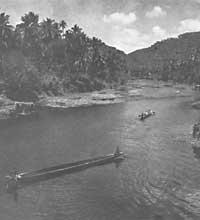
One point is clear, that is, a court is a disaster. The disappearance of one species brings with it that of others.
And now the man starts playing in this drama. When man pulls the jungle, it takes a long time to recover. Some fast-growing species form quickly, but this second rainforest is not as abundant as the original. Eventually it will return to its authenticity. Weather
d)
a, it will be long. For example, in Cambodia, the region of the Ankor area was cleaned 600 years ago, and has not yet recovered its ancient wealth!Moreover, the man's attack is harder than ever.

Gai honi buruzko eduki gehiago
Elhuyarrek garatutako teknologia





